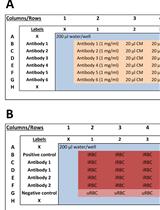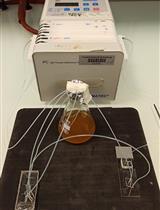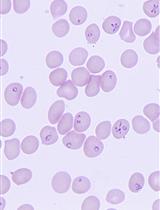- EN - English
- CN - 中文
Experimental Setup for a Diffusion Bioreactor to Isolate Unculturable Soil Bacteria
分离不可培养土壤细菌的扩散生物反应器实验装置
发布: 2019年10月05日第9卷第19期 DOI: 10.21769/BioProtoc.3388 浏览次数: 6135
评审: Alba BlesaCristina Colomer-WinterWenrong He
Abstract
Unculturable bacteria are those bacteria which proliferate in their native habitat but unable to grow or thrive in the normal laboratory media and conditions. The molecular techniques have revealed the significance of these uncultured bacteria in terms of their functional diversity and potential to produce secondary metabolites. To achieve these benefits, scientists have attempted to isolate and cultivate unculturable bacteria in the laboratory using transwell plates, optical tweezers, laser microdissection, microbioreactors, and diffusions bioreactors. However, these techniques are still inadequate to resolve the difficulties of cultivating unculturable bacteria. Therefore, it is essential to develop new cultivation method that enables growth of diverse range of bacteria in the laboratory conditions. Diffusion bioreactor is a membrane bound chamber which allows microbes to proliferate in their native environment by providing the excess to naturally occurring nutrients and signaling compounds. This paper presents efficient and reliable protocol to construct a diffusion bioreactor and its utilization to isolate and cultivate unculturable soil bacteria in laboratory.
Keywords: Diffusion bioreactor (扩散生物反应器)Background
The metagenomic analysis has shown an overwhelming number of bacterial populations which are beyond the cultivation in the normal laboratory conditions (Gans et al., 2005; Pham and Kim, 2012). These bacteria which are not-yet cultured and not able to grow on synthetic media are known as unculturable bacteria. The “unculturable” does not imply that these bacteria can never be cultured, but instead, it indicates the absence of information on their natural habitat and growth requirements (Stewart, 2012; Chaudhary et al., 2019). The molecular analysis has reported that uncultured bacteria possess novel biological and chemical properties, produce secondary metabolites, and comprise a diverse functional role (Ferrari et al., 2005; Vartoukian et al., 2010; van Dorst et al., 2016). The secondary metabolites such as novel antibiotics, enzymes, toxins, alkaloids have potential use for human welfares. Due to these beneficial aspects, several studies have attempted to explore and cultivate the hidden uncultured bacteria from the environments (Sait et al., 2002; Ferrari et al., 2005; Davis et al., 2005; George et al., 2011; van Dorst et al., 2016).
There are several difficulties in cultivating unculturable species in the laboratory setups. The unculturable bacteria fail to replicate in laboratory conditions due to lack of natural growth environment and inappropriate incubation time, temperature, and nutrients (Stewart, 2012). Next, traditional approach of cultivation is mainly based on nutrient-rich media which favors only rapid growers (Chaudhary et al., 2019). In the natural habitat, microbe-microbe interaction and their metabolism are crucial aspects for survival and growth. These microbial behaviors depend on several physiological parameters which include pH, osmotic conditions, temperature, and nutrients (Sait et al., 2002). Therefore, without addressing above-mentioned limitations, it is not possible to cultivate missing bacterial species. Strategies such as simulating natural habitat, modifying nutrients composition, optimizing growth conditions, co-culturing with helper agents, and prolonging the incubation time during cultivation of uncultured domains have reported good results (Kaberlein et al., 2002; Joseph et al., 2003; Pham et al., 2012; Stewart, 2012; Chaudhary et al., 2019). Some recent advancement has been made in cultivation techniques using diffusion chambers, transwell plates, microbioreactors, optical tweezers and laser microdissection (Pham et al., 2012). However, the available techniques are still inadequate to address the limitation of cultivation of unculturable bacteria. Any attempt to develop novel cultivation technique for unculturable bacteria accounts a great significance in this field.
Enrichment cultivation utilizing diffusion bioreactor is a promising strategy to cultivate previously uncultured microbes. It helps to enrich microbial species by creating natural environment and allows the microbes with the access to growth components and signaling compounds (Bollmann et al., 2007). In addition, it also provides environment for bacterial interaction (Stewart, 2012; Chaudhary et al., 2019). Diffusion bioreactors are also suitable to cultivate various microbial species from varieties of samples such as soil, sediments, and water samples (Kakumanu et al., 2012; Chaudhary et al., 2019). This paper describes a novel cultivation technique for uncultured soil bacteria using newly designed diffusion bioreactor. Diffusion bioreactor permits the passage of essential elements from the soil into the inner chamber mimicking the natural environments (Kaberlein et al., 2002; Bollmann et al., 2007; Kakumanu and Williams, 2012). Here, we present an effective protocol for experimental setup using diffusion bioreactors to isolate and cultivate the unculturable soil bacteria.
Materials and Reagents
- 2- mm mesh sieve (Fisher Scientific, catalog number: 04-881-10G)
- Whatman filter paper, No. 1 (GE Healthcare, catalog number: 1001-150)
- Mixed cellulose ester filter membrane, 0.22 µm (Merck Millipore, catalog number: GSWP04700)
- Polycarbonate membrane, 0.45 µm (GE Healthcare, catalog number: RPN303B)
- 2 L Conical flasks (DURAN, catalog number: 212176303)
- Petri dish (SPL Life Science, catalog number: 10090)
- 15 ml sterile tube (SPL Life Science, catalog number: 50015)
- Inoculating loop (SPL Life Science, catalog number: 90010)
- Plastic containers with sizes of 2 L (for inner chamber) and 4 L (for outer chamber) (Berry Plastic, catalog number: T51368CP)
- R2A broth (KisanBio, catalog number: MB-R2230)
- Nutrient broth (NB, KisanBio, catalog number: MB-N1037)
- Tryptic Soy Broth (TSB, KisanBio, catalog number: MB-T1053)
- Luria-Bertani broth (LB, Oxoid, catalog number: CM0996)
- Agar (Bio Basic, catalog number: MD01)
- Gelatin (Sigma-Aldrich, catalog number: G2500)
- Cycloheximide (Sigma-Aldrich, catalog number: C7698)
- DNA isolation kit (Instagene Matrix, Bio-Rad, catalog number: 7326030)
- Multiscreen PCR384 Filter Plate kit (Millipore, catalog number: S384PCR10)
- BigDye Terminator Cycle Sequencing Kit (Applied Biosystems, catalog number: 4337455)
- FastDNA SPIN kit for soil (MP Biomedicals, catalog number: 116560-200)
- QIAQuick PCR Purification Kit (Qiagen, catalog number: 28104)
- Beef extract
- Casein
- Enzymatic digest of soya bean
- Glucose
- Peptone
- Sodium pyruvate
- Soluble starch
- Yeast extract
- NaCl
- MgSO4·7H2O
- CaCo3
- K2HPO4
- KNO3
- FeCl2·7H2O
- (NH2)2HPO4
- HCl
- CoCl2·6H2O
- CuCl2·2H2O
- FeCl2·4H2O
- NaBO3
- MnCl2·4H2O
- Na2MoO4·2H2O
- NiCl2·6H2O
- ZnCl2
- NaOH
- Na2SeO3·5H2O
- Na2WO4·2H2O
- Soil extract (SE) (see Recipes)
- Trace element SL-10 (see Recipes)
- Selenite tugstate (see Recipes)
Equipment
- Orbital shaker (FINEPCR, model: SH30)
- Vortex (Scientific Industries, model: 2E-179213)
- Multi-room incubator (Han Baek Scientific, model: HB-103-4)
- Twin cooling system Refrigerator (4 °C to -18 °C) (Samsung Zipel, model: C23442BS300886)
- Centrifuge (Hanil Science Industrial, model: UNION 32R)
- Magnetic stirrer (Global Lab, model: GLMS-G)
- MaestroNano spectrophotometer (MaestroGen, model: MN-913)
- MultiGene OptiMax Thermal Cycler (Labnet International, catalog: TC9600-G-230V)
- 3730xl DNA analyzer (Applied Biosystems, catalog: A41046)
Software
- Microsoft Office Excel 2013 and OriginPro 8.5
- MEGA 6.0.6 (For phylogenetic analysis)
- Lasergene SeqMan Pro, version 7.1.0 (44.1) (DNASTAR Inc.)
Procedure
文章信息
版权信息
© 2019 The Authors; exclusive licensee Bio-protocol LLC.
如何引用
Chaudhary, D. K. and Kim, J. (2019). Experimental Setup for a Diffusion Bioreactor to Isolate Unculturable Soil Bacteria. Bio-protocol 9(19): e3388. DOI: 10.21769/BioProtoc.3388.
分类
微生物学 > 微生物细胞生物学 > 细胞分离和培养
环境生物学 > 细菌 > 分离
您对这篇实验方法有问题吗?
在此处发布您的问题,我们将邀请本文作者来回答。同时,我们会将您的问题发布到Bio-protocol Exchange,以便寻求社区成员的帮助。
Share
Bluesky
X
Copy link















